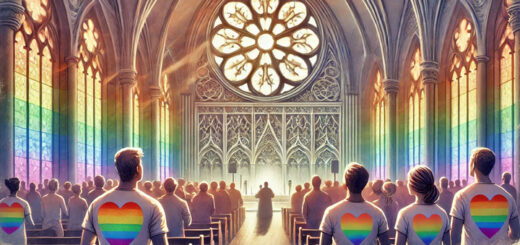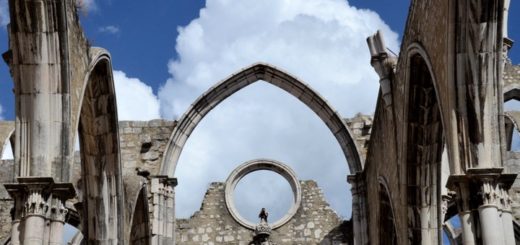Religion and homosexuality. A study casts some light on how the Catholic Magisterium has an impact on gays and lesbians and how an inclusive pastoral care can make the difference
Interview of Dr. Arianna Petilli by Innocenzo Pontillo (Progetto Gionata), Translated from Italian by Claudio Abate / Andrew Lyon
A few days after the international conference “The ways of love, towards a pastoral care with LGBT people” (Rome. 3 October 2014), which intended to draw the Synod of Bishops’ attention to the question “Which pastoral care for LGBT people?”, a research “Religion and homosexuality: an empirical study on internalized homophobia in relation to the religiosity level” was published.
For the first time in Italy this research focuses on the impact of the Catholic teachings on LGBT people and investigates which effects a welcoming and friendly pastoral care might have on Catholic gays and lesbians.
This Italian research involved 366 homosexuals (Catholics and non believers) and some Italian groups of gay Christians who have experienced an inclusive pastoral care that deals with the conflicts they might feel between their spirituality and their homosexuality in the Catholic Church.
Arianna Petilli, graduated in clinic and health psychology, conducted this study, together with Professor Davide Dèttore (Department of Psychology, University of Florence, Florence, Italy), Doctor Antonella Montano (Beck Institute, Rome, Italy) and Professor Giovanni Battista Flebus (University of Milan/Bicocca, Italy).
The findings of this research confirm that Catholicism has a deep impact on how gays and lesbians consider their homosexuality and show that Catholic homosexuals have higher levels of internalized homophobia compared to non believers. The research also shows the more Catholic values are rooted in the original family the stronger the internalized homophobia.
For the first time the research analyses the effects of the inclusive pastoral care brought about by gay Christian Groups in the Italian Catholic Church. These groups were born spontaneously and their hosts are often Catholic parishes (this is the case in Florence, Catania, Palermo and Padua). Their contribution makes up for the lack of an official welcoming pastoral care for LGBT people. The study shows that the more people attend these groups, the less the same people experience homophobia, which is a rejection of their homosexuality. Most of the groups’ activities (prayers, witnesses, reflections on biblical texts) aims to help LGBT Catholics to read their homosexuality from a positive religious point of view.
The walk of welcoming and reconciliation within the Catholic Church led by these groups, scattered all around the world nowadays, is an extremely interesting instance of pastoral care generated from the grassroots.
When this happens in religious communities it has an extra benefit: it teaches the hosting religious communities how to get over the discrimination and the stereotypes about LGBT people.
.
But let us ask Dr. Arianna Petilli what the purpose of her study was. The study aim was to understand how Catholicism influences LGBT people’s behaviour in relation to their homosexuality. Therefore, three different groups of homosexuals were compared: gay and lesbian non believers, gay and lesbian Catholics who attended gay Christian groups, and gay and lesbian Catholics who had never attended a group. In total the research involved 366 people. The levels of internalized homophobia in the three groups were measured and compared.
.
Before analyzing the outcome of your research, can you explain what internalized homophobia is and how Catholicism influences gays and lesbians’ levels of internalized homophobia?
With the expression “internalized homophobia” we refer to a homosexual’s internalization of the negative perception that society has on homosexuality. In other words, homosexuals learn and apply to themselves the negative stereotypes about homosexuality that are common in the surrounding social context.
As for the relationship between Catholicism and internalized homophobia, it appears that identifying one’s self with a religion that supports a negative image of the homosexual orientation increases gays and lesbians’ prejudices about homosexuality and, therefore, towards themselves. The Catholic Church, indeed, stands still on its moral condemnation of sexual intercourses among same-sex people and insists on chastity as the only proper attitude for gays and lesbians.
A person who is attracted to people of the same sex and who calls themselves Catholic will have to come to terms with the teachings of their own religion, especially if they mean a lot to them and they want to live by them. Very often a conflict between their sexual preferences and their faith will rise and thwart the process of acceptance of their own homosexuality.
.
What are the results of your study on the relation between Catholicism and internalized homophobia?
Unsurprisingly, my research confirms that Catholicism strongly influences the way gays and lesbians consider their homosexuality. Indeed, it shows that gay and lesbian Catholics involved in the study, compared to non believers, suffer higher levels of internalized homophobia. The results show how the more Catholic the interviewee’s original family, the stronger their internalized homophobia.
.
Let us focus now on gay Christian groups. First of all, why were these groups born and what is their purpose?
Despite the official Catholic doctrine, in several places around the world gays and lesbians met spontaneously in groups to profess their religion without hiding or trying to change their homosexuality or suggesting chastity as the only possible way. This is also what happened in Italy with the gay Christian groups.
The aim is to help participants to get over the conflict between their religious believes and their homosexuality. As I was telling you before, because of the official Catholic teachings against same-sex intercourses, a lot of gays and lesbians can perceive a strong clash between their own religious values and their sexual orientation. The gay Christian groups try to offer their members the chance to live their homosexuality according to their religious beliefs, without giving up either of the two.
.
How do they pursue this aim? The Groups organize several activities to promote a new and positive religious interpretation of homosexuality. For instance, some meeting are dedicated to the reading of sacred texts and they are interpreted according to the new exegesis that shows how each biblical passage needs to be put in the historical and cultural context in which it was written.
There are also moments of prayer (private or in group) and meetings with experts in the relationship between the Church and homosexuality. Besides, on the basis of my experience in gay Christian groups, I realized how in these groups religion is seen as a direct relationship with God and not as something that needs the mediation of the Catholic institution. In this way people follow a personal spiritual walk.
This cuts down the importance of the Catholic documents, always against acts of homosexuality, and reduces the impact of the negative image that homosexual Catholics have about themselves and their sexuality. And indeed, although most members are Catholic, the definition of “Christian groups” implies a distance from the ecclesiastic hierarchy and from a way of conceiving the religion as a collection of dogmas and prohibitions.
.
What were the results regarding gay Christian groups?
As I said before, gay and lesbians Catholics are more homophobic than homosexual non-believers, regardless of their association with gay Christian groups. We might quickly draw the conclusion that these groups are not able to achieve their goal. Actually, the research points out that first of all the more LGBT people attend these groups, the more their internalized homophobia goes down.
Secondly, by comparing the levels of internalized homophobia of people who had been attending these groups for about a year to those of who never took part in them I could verify, at least n this study, that the people who had just arrived were more homophobic. It seems that those who have a more negative opinion about their homosexuality attend these groups. By increasing the time they spend with the group their levels of internalized homophobia decrease. This shows how important it is to gay and lesbian Catholics to attend religious groups who validate their homosexuality.
.
In your opinion, why has attending these groups had such positive effects?
You must think that, for some, the group is the only place where these people can live without inhibiting their homosexuality and the only context where they can profess their religion without regret. Most of the activities within the group try to help its members to argue against the official Catholic teachings, always opposed to same- sex intercourses, and interpret homosexuality in a positive religious perspective.
Moreover, in a group it is possible to meet more gay and lesbian Catholics who share the same experience and who can become a source of support, other than role models. This is something not to be understated because often gay and lesbian Catholics are twice rejected, from the gay community, which discriminate them because they are believers, and from the religious world, which excludes them because they are homosexuals.
It then becomes clear that attending these groups is a unique opportunity to break down the isolation in which homosexuals were restrained and to develop a new identity where homosexuality and religious values coexist in a perfect balance.
.
The comprehensive results of the research in Italian (File PDF)>
https://waysoflove.files.wordpress.com/2014/09/articolo-italiano-conferenza-1.pdf
The comprehensive results of the research in English (File PDF)>
http://waysoflove.files.wordpress.com/2014/09/articolo-inglese-conferenza-1.pdf






